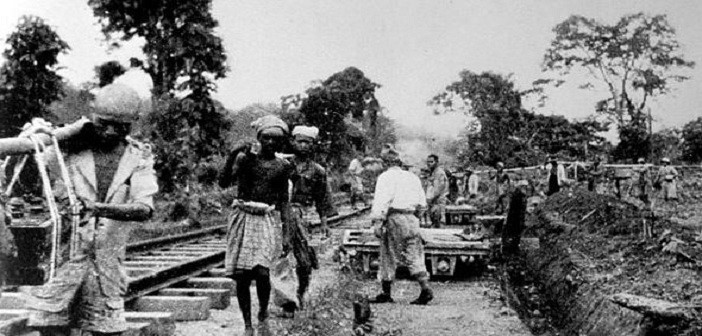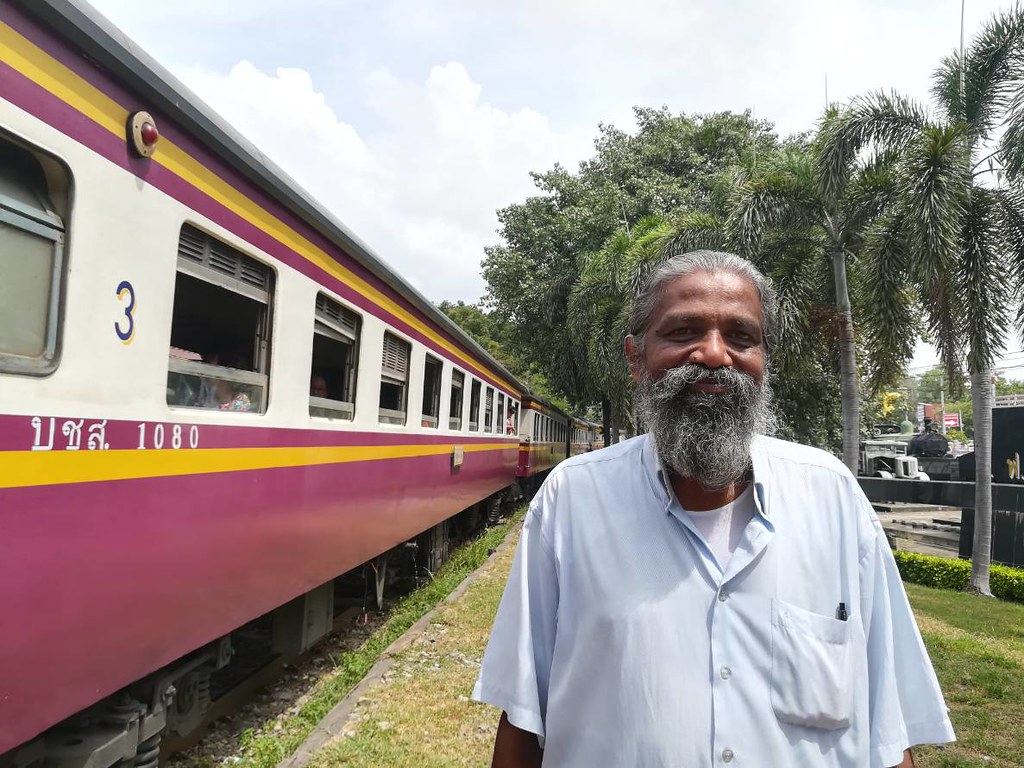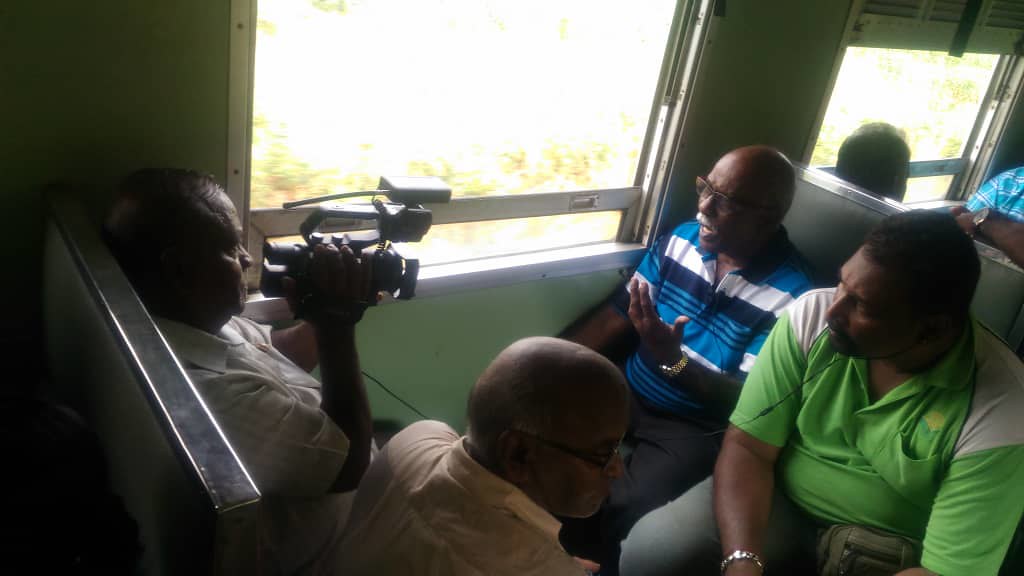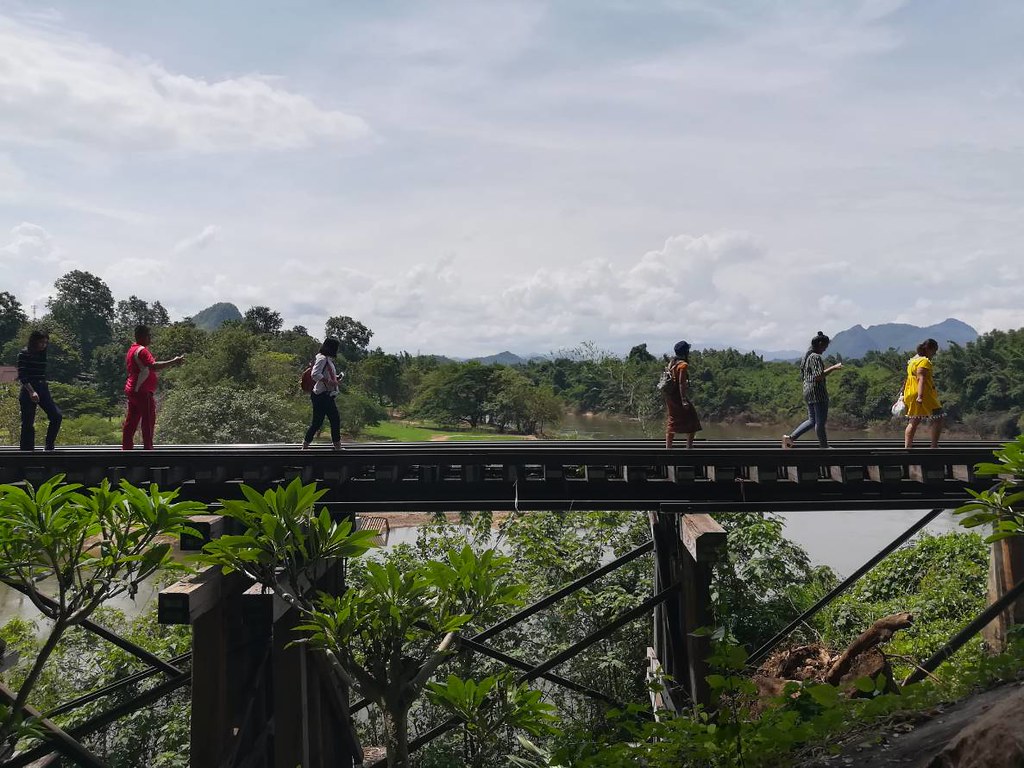Relatives of Asian workers who participated in the construction of the Death Railway have retraced their state-forgotten stories in Thailand 75 years after its completion. The head of the group wants a proper official commemoration and a detailed history to recognize the victims and their countries.
Kanchanaburi’s famous hot sunshine failed to stop tourists from many nations from visiting the Death Railway on 15 October, just one day before the 75th anniversary of the completion of one of the most oppressive wartime railway projects of the Japanese Empire.
Hellfire Pass Memorial Museum Audio Guide recounts:
“On the 16th of October 1943, 15 months after work first begun, both ends of the Burma-Thailand Railway were joined at Kointaka [Kaeng Khoi Tha, Sangkhla Buri District, Kanchanaburi Province] – not far from the Three Pagodas Pass. With much pomp and a fair amount of ceremony, a well-fed Japanese soldier drove the final spike into a sleeper. The finished railway wound around 415 kilometres of jungle track, and included 688 steel and timber bridges. The cost in human life was savage. It is estimated that approximately 12,800 Allied prisoners of war and up to 90,000 Asian labourers died working on the railway.

Kointaka [Kaeng Khoi Tha, Sangkhla Buri District, Kanchanaburi Province] where the opening ceremony was held on 16 October 1943 (Source:The Australian War Memorial)

Asian workers also worked on the railway (Source: The Global Review)
75 years since the completion of the Death Railway
The Thailand-Burma railway was finished on 16 October 1943 with the aim of transporting troops and supplies of the Japanese Empire to Burma for a planned strike into British India.
The railway was built from 2 ends; one began in Ban Pong, Ratchaburi Province, in Thailand and the other began in Thanbyuzayat, Mon State, in Burma. The tracks met at Konkoita station (now under the Vajiralongkorn dam reservoir).
It took only a year to complete the 415 km railway over rough terrain. Some estimates say that 50% of the Asian workers died from starvation, disease and maltreatment; about 20% of the PoWs died which is outnumber the death toll from Hellfire Pass Memorial Museum, reflecting the variation of the information.
61,811 Allied Prisoners of War are known to have worked in the railway. Some made it back alive and some did not; some are remembered but some are not. Most were recognized and later given a proper burial. On the other hand, over 300,000 Asian workers or “Romusha” as called by the Japanese also worked on the railway, only for many to lose their lives and pass forgotten.
The Romusha mostly came from Vietnam, Java (Indonesia), Malaya, Singapore, Burma, India and Thailand. (The ‘Chinese’ were almost all from Thailand, Malaya and Singapore). Some were drafted in by the Japanese and some came after rumours of good wages.
Sadly, the dead Romusha are commemorated by nothing more than a mass grave by a Buddhist temple and a Japanese cenotaph.Their deaths went unrecognized by the governments where they came from after they became independent.
Despite this lack of recognition, some relatives of dead Romushas came from Malaysia to the site in Thailand this year in order to retrace and pay tribute to their loved ones.

P. Chandrasekaran, Chair of the Death Railway Interest Group (DRIG)
P. Chandrasekaran, Chair of the Death Railway Interest Group (DRIG) brought a group of 13 people to remember their loved ones who lost their lives in the construction. The trip was recorded by his Indian colleagues and will be broadcast in India and Malaysia.
(The purpose is) to bring the family members of victims who built the railway. They have never had a chance to come and see the place. If they come by themselves, they will not know where to go.
We try to retrace the journey of our workers who were brought here. We understood from some survivors that workers were originally taken from various towns in Malaya and brought to the railway.


The DRIG Chair said that 2 of the survivors came with him on the previous trip last February. The next trip will be in the December when Thai officials will hold a commemoration ceremony for the dead.
The primary aim of this trip is basically to tell the world that there is no commemoration held except for the prisoners of war. For the Asian workers who died, there is no commemoration. Not by the Thai, Indian, or Malaysian governments, in fact any government whose people worked on the railway. They’re totally forgotten.
We are trying to make a point. The governments may have forgotten but the people who are affected have not. Six Malaysians came with me; every one of them is affected. Either their grandfather, father, uncle or somebody is affected.
We all are the affected. There are no tourists in this. We’re all affected people. For us it’s an emotional trip.

He also said that the tourist spots and history are all about the white men. And Thai officials tend to narrate the story in the same way.
They (some group members who travelled to the site before) are very disappointed that there is nothing in Thailand to shows that any Asian worker was involved. Everything is about the white man. Even the commemoration is for the white men. Also when the Thai government stages the special programme in December, they make it look like only the white men built the railway.
I have also seen some fliers produced by the Thai Tourism Authority saying that there is a special museum built for the railway. It’s called the JEATH museum. They say it’s named after the 5 countries that built the railway: England, Japan, Australia, Thailand and Holland. They only mentioned that. All of other Asian countries are forgotten.
If you ask me, it is a gross misrepresentation of the facts, because the Asians who worked on this railway far outnumbered the Europeans or Thais. The Thais formed very small number. The Europeans may have formed a 1/3 or a quarter but you forgot the other 3 quarters.
And it is not a private company or enterprise which overlooked it for commercial reasons (which) I can understand, but the Thai Tourism Authority which is a government body is promoting this misinformation.
Although the JEATH War Museum was the initiative by the Abbot of Wat Chaichumpol. However, the TAT promoted its misinformation about the international involvements on its website.
I think they should correct it and give due recognition to the Asian workers. So what I tell them is; if you cannot have the cemetery for these workers, the least you can do is to have a proper monument for the Asian workers.
Prachatai English is an independent, non-profit news outlet committed to covering underreported issues in Thailand, especially about democratization and human rights, despite pressure from the authorities. Your support will ensure that we stay a professional media source and be able to meet the challenges and deliver in-depth reporting.
• Simple steps to support Prachatai English
1. Bank transfer to account “โครงการหนังสือพิมพ์อินเทอร์เน็ต ประชาไท” or “Prachatai Online Newspaper” 091-0-21689-4, Krungthai Bank
2. Or, Transfer money via Paypal, to e-mail address: [email protected], please leave a comment on the transaction as “For Prachatai English”
